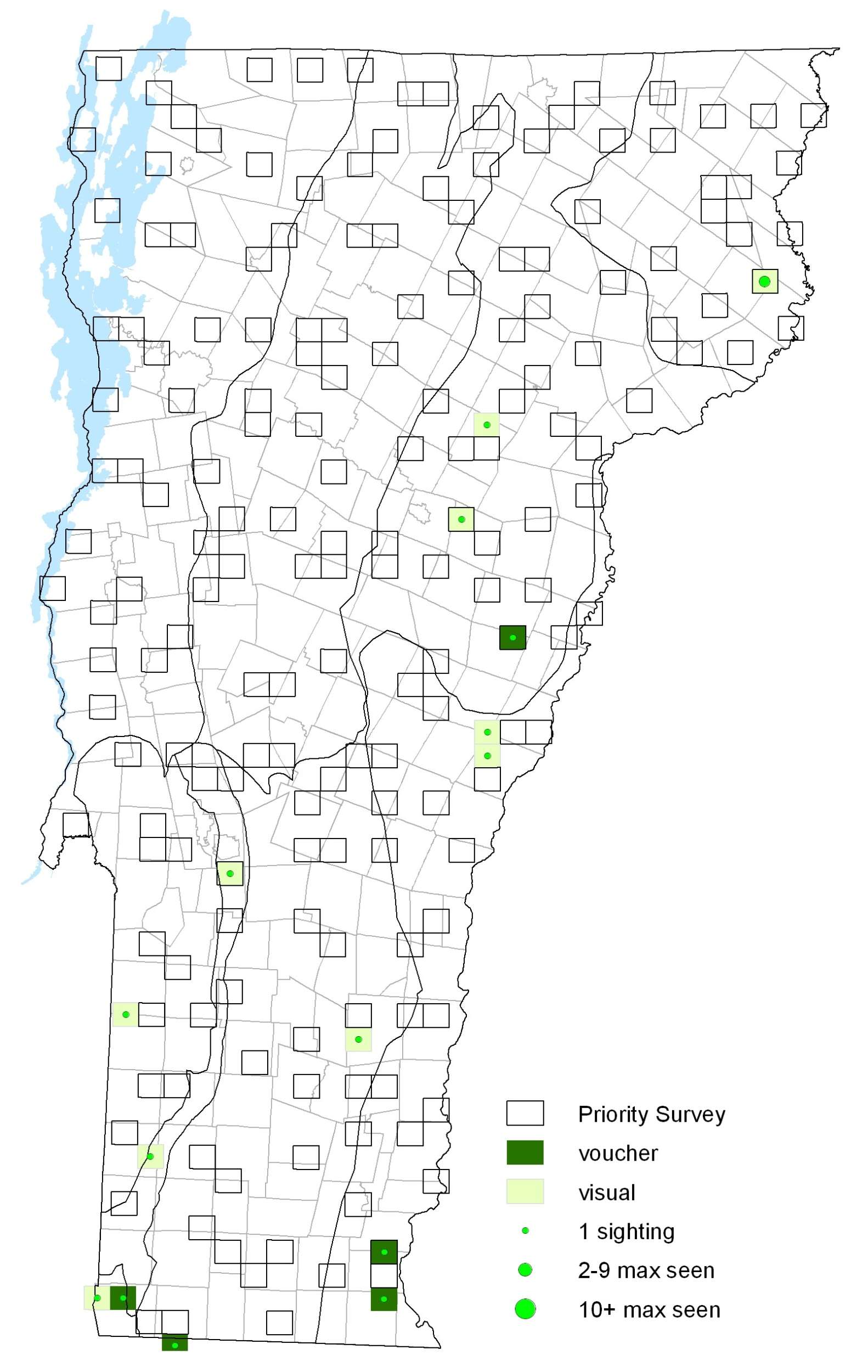The Spicebush is one of the several Swallowtail species that is palatable, but is able to gain protection from predation through mimicry of the Pipevine Swallowtail. Patrolling males may be found in open woodlands and along woodland edges, and often found at mud puddles sipping nutrients. Both sexes nectar at wide variety of flowers.
Identification
Upper surface of forewing is mostly black with ivory spots along margin. Upper surface of hindwing has orange spot on costal margin and sheen of bluish (female) or bluish-green (male) scales. Underside of hindwing with pale green marginal spots.
Conservation Status
Resident – rare
Vermont S1
Global G5
Flight
Two generations reported for other areas apparent from VBS records. Extreme dates: 10 June 2007 in Arlington (H. Romack) and 2 September 2007 in Pownal (K. Hemeon).
Distribution and Habitat
North American range- Eastern states from southern Canada to Florida; west to Oklahoma and central Texas. Occasionally strays to North Dakota, central Colorado, and Cuba.
One historic record from Winooski in the UVM Zadock Thompson Natural History Collection, a female found on 23 July 1994 (N. Livada).
Its hostplant is Spicebush (Lindera benzoin), which is found primarily in southern Vermont. Larvae also known to use Sassafras (Sassafras albidum).

For more information visit eButterfly






